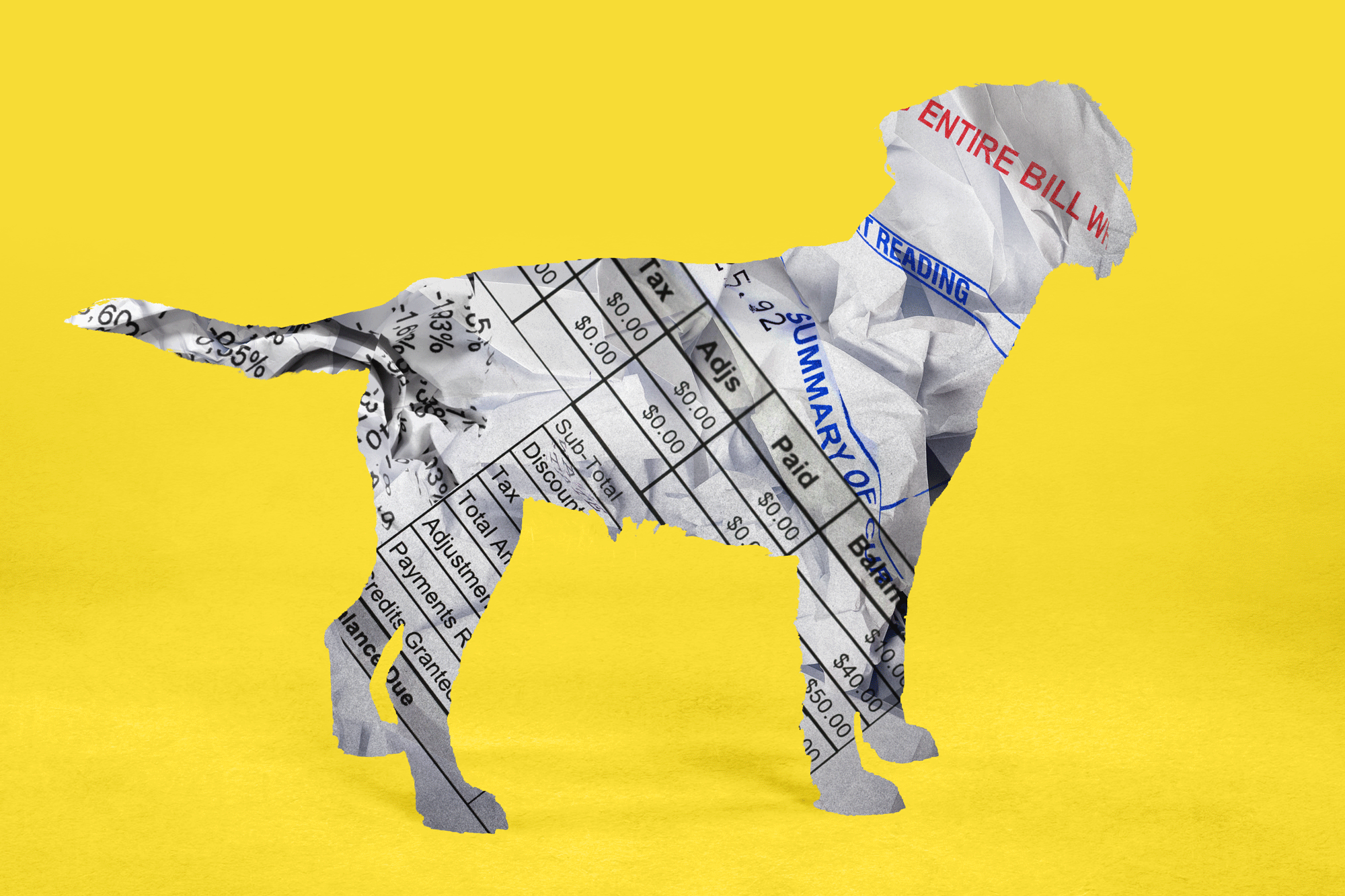Medical bills soaring for American pets
- Share via
WAYNE COUNTY, N.C. — With aging, it has become a routine faithfully endured by the Guffords. Each day starts with a blood-sugar test and a shot of insulin. Then a couple of pills, maybe mashed into a bowl of tuna and canned carrots. Mixed with dry chow.
All for their 12-year-old dog.
Brownie takes more drugs than his human companions put together. He has been medicated in recent months for diabetes, infections, high blood pressure and his finicky gut, which rebels at red meat. Since 2005, he has also taken drugs for anemia and a spider bite.
“He’s our baby, he’s a family member, I would want somebody to do that for me,” Ann Gufford says.
She estimates expenses of $5,000 over the last two years on medicine for the mixed beagle-cocker spaniel. He has lost a couple of steps on the squirrels outside their little home near Goldsboro, N.C. His hearing is failing. Still, without some of the drugs, he’d probably be gone.
“You cannot put a price on that,” Gufford says.
“And I don’t want to,” adds her husband, Ben.
Americans have begun to medicate their dogs, cats and sometimes other pets much as they medicate themselves.
They routinely treat their pets for arthritis, cancer, heart disease, diabetes, allergies, dementia, and soon maybe even obesity. They pick from an expanding menu of mostly human pharmaceuticals such as steroids for inflammation, antibiotics for infection, anti-clotting agents for heart ailments, Prozac or Valium for anxiety, even the impotence drug Viagra for a lung condition in dogs.
Increasingly, they buy at people pharmacies or online and sometimes pay with health insurance.
Until a few decades ago, veterinarians concentrated on care that reflected the country’s agrarian roots: keeping farm animals healthy to protect the human food supply. Instead of being medicated, a very sick animal was quickly sacrificed to save the herd. Pets were typically kept outside with the cows, chickens and pigs. A dog was lucky for a dry place in a crude shelter; a cat, for a warm spot in the barn.
Within the last five years, pets have overtaken farm animals in the pharmaceutical marketplace, claiming 54% of spending for animal drugs, according to the trade group Animal Health Institute.
Keeping more than 130 million dogs and cats alone, Americans bought $2.9 billion worth of pet drugs in 2005. Though equal to 1% of human drug sales, the market has grown by roughly 50% since 2000.
“As more and more drugs are being developed for people, more and more drugs are being developed for veterinary medicine. It’s really a parallel track,” says Dr. Gerald Post, founder of the nonprofit Animal Cancer Foundation.
The U.S. Food and Drug Administration has approved more than 40 new pet drugs over the last five years.
One of them was Slentrol, which became the first government-approved slenderizer for obese dogs in January. It will cost up to $2 a day, though buyers could presumably put their animals on a diet and save money on dog food in the bargain.
“We’re treating them like part of the family, so we indulge them,” says Georgette Wilson, a vet for Slentrol’s maker, the animal health branch of pharmaceutical giant Pfizer. “We give them too much food. We don’t exercise them as much as we can.”
The market growth reflects an intensifying bond between pets and their owners, who are comforted by the unquestioning love of their animals in an affluent society where traditional institutions are frayed and mobility severs family ties. A 2002 survey for the American Veterinary Medical Assn. found that 47% of people viewed their pets as family members.
This attitude makes customers vulnerable to overspending, some vets say.
For example, a single three-month course of pet chemotherapy might cost $3,000, though chemo in an animal is meant more to ease symptoms than prolong life. It’s a reasonable option for some pets. Researchers also have begun to test expensive targeted cancer drugs like Gleevec on animals.
“I really should have let him go before I did,” says Margaret Park, of Raleigh, N.C., who had her failing Abyssinian cat treated with a second round of chemo. “When you’ve been treating an animal for a really long time, you lose your objectivity a little bit.”
Unwilling to let go, some people go to extremes to scrape up the cash -- even mortgaging their houses, says Dr. Steven E. Suter, who treats pet cancers at North Carolina State University’s veterinary college
When Ann Gufford’s parents and Brownie fell ill two years ago, she visited all three daily at their hospitals. Gufford, who works as a laboratory technician in a hospital, says some co-workers think she “should just go and put that dog down and forget about it.”
She adds disdainfully: “They have yard dogs.”
Of course, many people still medicate pets sparingly. Laura James of Plymouth, Mass., said she and her husband had a tumor removed from their 11-year-old golden retriever. When the tumor returned, though, they decided to let “nature takes its course.” Recently, they had to euthanize their pet.
They never considered pet chemo, rejecting it as too expensive. “If it were our children, there’d be no question, but it’s a pet,” James says. “My sister thinks I’m cruel.”
James is not the only one uneasy with the cost of pet medicines. Dr. Laurence Family, a vet in Latham, N.Y., says he comes across the occasional client who finds his charges “outrageous.”
Some question whether society is keeping priorities straight. Dianne Dunning, an ethicist at North Carolina State’s vet school, anguishes over the millions of animals, lost and unwanted, that are euthanized each year, while millions of dollars are spent on pet medicines.
David Rothman, a Columbia University expert in medicine’s role in society, points to the millions of people who are desperately short on care: “If you can’t get malaria drugs in some Third World countries, what are we doing with chemotherapy for cats?”
Yet many American pet owners, like some who come to North Carolina State’s veterinary school, “spend $500 a month on their chronic medications -- and they don’t flinch,” says school pharmacist Gigi Davidson.
Neither do the drug companies. They’re doing more direct marketing with ads that show healthy-looking pets -- the perfect counterparts of vibrant people in ads for human drugs.
“Vets are not great marketers,” says industry consultant Ron Brakke. “The companies have figured this out: that by advertising to the pet owner, we’ll have the pet owners asking about more products.”
In the last year, 1-800-PetMeds, a phone and online seller, spent about $22 million on advertising, says its chief financial officer, Bruce S. Rosenbloom. Actress Betty White has acted as celebrity endorser.
But promotion can backfire. Some popular pet drugs, tested less extensively than human medicines, have hurt the health of some pets with unexpected side effects.
One example: The drug Rimadyl, developed for humans but later approved by the FDA as a treatment for dogs’ arthritis, was aggressively advertised by its maker, Pfizer. But it ended up causing kidney and liver damage in some animals. It has been tied to more than 3,000 pet deaths, FDA records show.
In the end, Pfizer paid hundreds of thousands of dollars in compensation to pet owners, and the FDA asked the company to give out warning sheets with the drugs.
Some vets think that a greater share of spending is wasted on ineffective or harmful drugs for pets than people. “I don’t want people to think that the health of their animals is medication-driven,” says Dr. Norm Stillman, a Plymouth vet.
Health insurance for pets has begun to catch on. It multiplied from near invisibility in 2002 to as much as 3% in 2005, a marketing study found. Now dogs, cats, birds, pigs, mice, snakes and other exotics are insured.
Veterinary Pet Insurance of Brea, Calif., claims close to 80% of the U.S. market with its 400,000 policies, typically costing $30 a month in premiums. Company spokesman Brian Iannessa says the total market is expected to climb to $500 million by 2010.
Paul Hubrich, who recently treated two dogs with chemo at Tufts University’s veterinary school in North Grafton, Mass., doesn’t have insurance on them and figures it wouldn’t have saved him much.
But he’s not complaining. One of his dogs, a mixed breed, was expected to die of lymphoma within weeks. It labored during chemo but beat the odds, still alive after two years. His other dog, a springer spaniel, was alive too, though it had run through more than 50 drugs for various problems over three years.
“Do I think the drugs are expensive?” says Hubrich, who adopted both from a shelter. “I would just say to you that the dogs are still here.”
More to Read
Sign up for Essential California
The most important California stories and recommendations in your inbox every morning.
You may occasionally receive promotional content from the Los Angeles Times.










